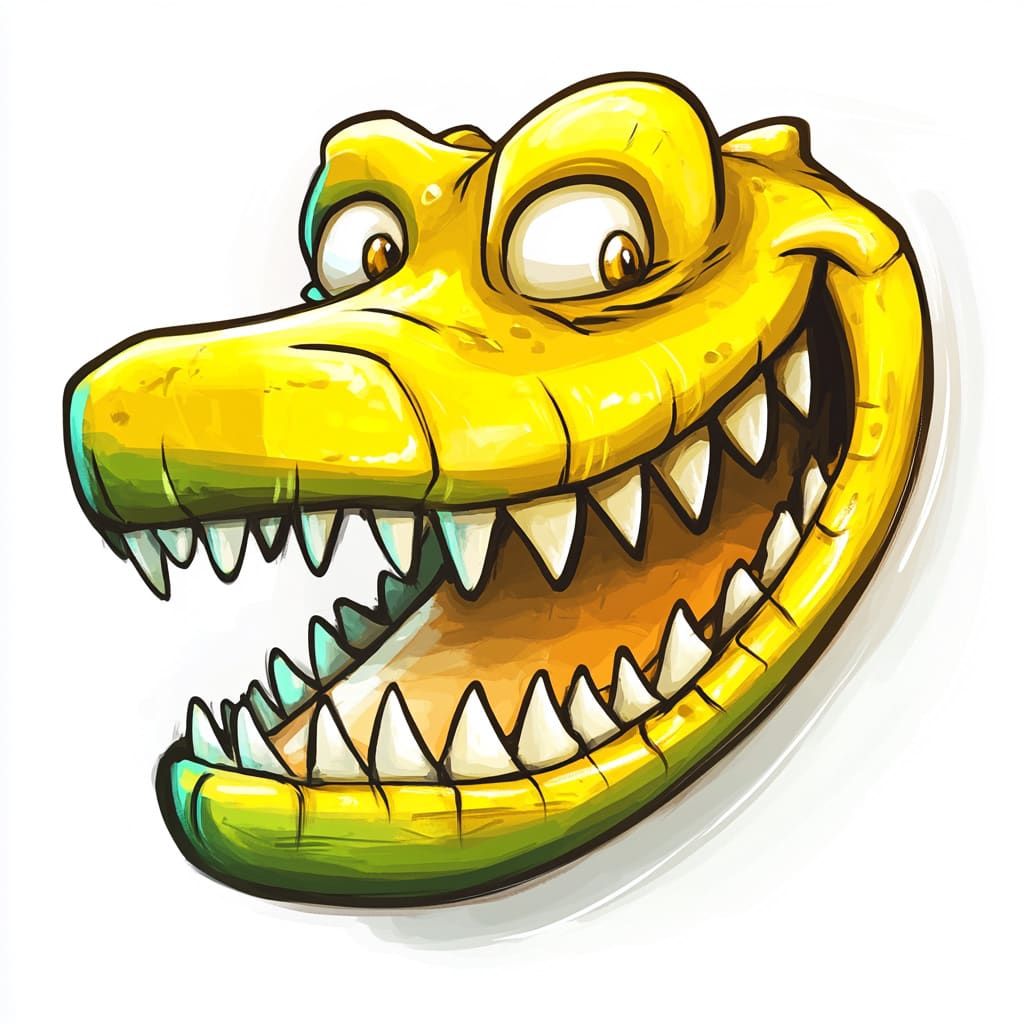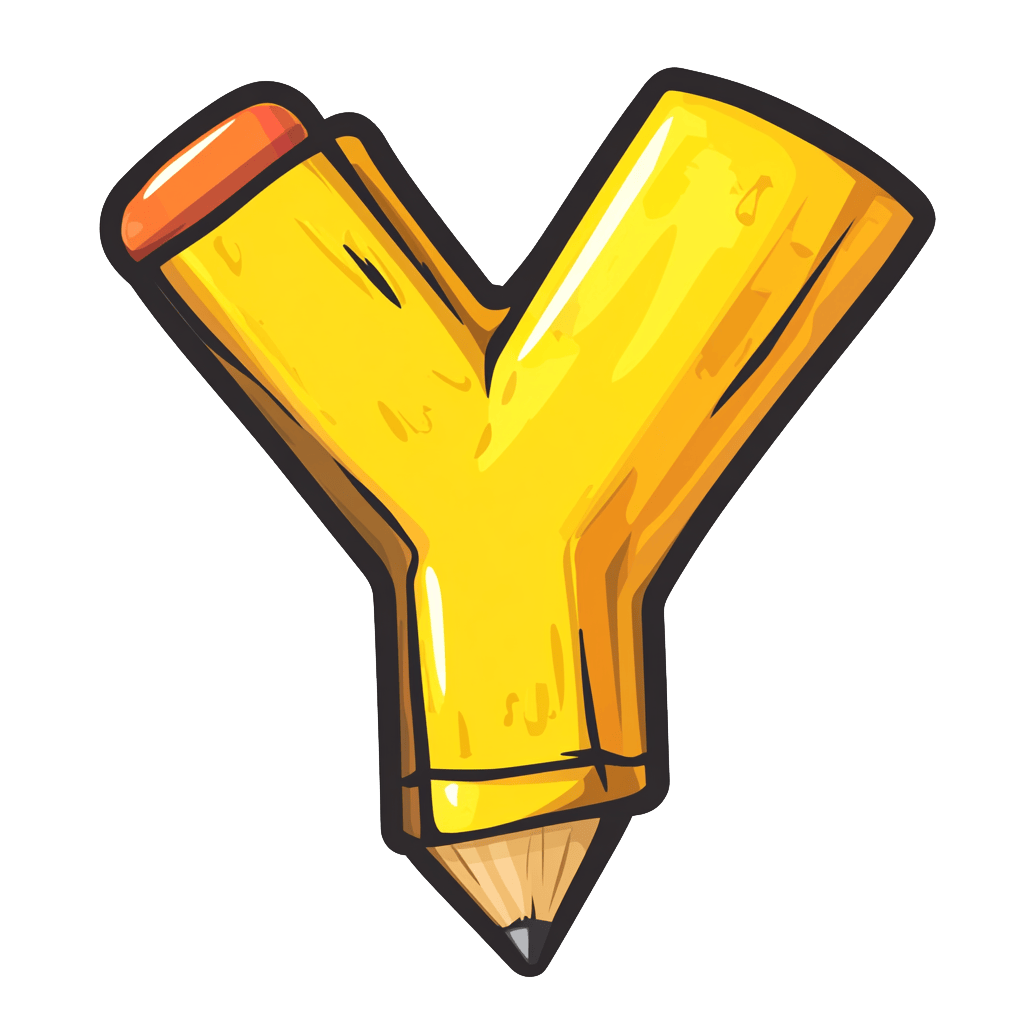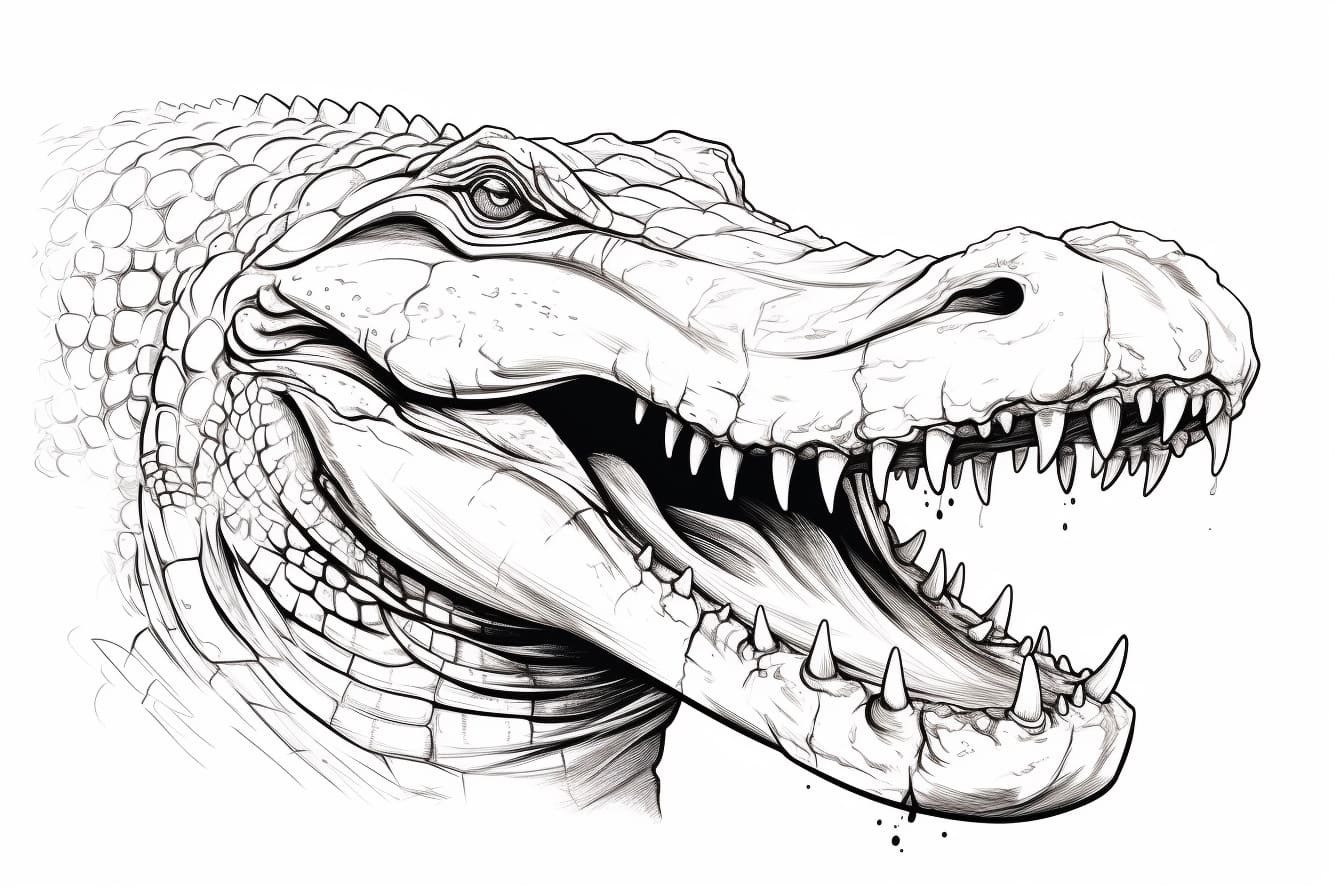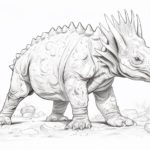
Sketching an alligator head is more than just putting pencil to paper—it’s an invigorating artistic experience! This unique project invites you to immerse yourself in the fascinating world of one of nature’s most formidable creatures. Imagine the textured ridges of its rugged skin, the fierce architecture of its jawline, and that haunting, unwavering gaze. For artists eager to hone their skills in both realism and creative expression, capturing the essence of an alligator can be a thrilling challenge.
As we embark on this drawing adventure, I’ll guide you step by step through the process of bringing an alligator head to life. From the initial rough outline of its powerful jaws to the final touches that bring out the intensity in its eyes, each phase is designed to enhance your drawing abilities while deepening your appreciation for these remarkable reptiles. So, gather your materials, loosen those fingers, and let’s get ready to translate this awe-inspiring creature into a stunning work of art on your canvas! Whether you’re a seasoned artist or just starting out, this captivating journey is sure to ignite your creativity and passion for drawing.
Materials Required
To draw an alligator head, you will need the following materials:
- Drawing paper or sketchbook
- Pencils (different grades for shading)
- Eraser
- Ruler (optional for measuring proportions)
- Reference photo of an alligator head for accuracy
- Blending stumps or tortillons for blending shading
- Pen or fine liner for adding details
- Colored pencils or markers (optional for adding color)
How to Draw an Alligator Head: a Step-by-step Guide
Step 1: Gather Your Materials
Gather the necessary materials for your drawing, including paper, a pencil, an eraser, and any preferred coloring materials.
Step 2: Study Reference Images
Take some time to study reference images of alligator heads to understand their shape, features, and proportions. This will help you in accurately drawing the alligator head.
Step 3: Start with Basic Shapes
Begin by lightly sketching the basic shapes of the alligator head. Start with an oval shape for the main part of the head and a smaller oval or circle for the snout.
Step 4: Define the Snout
From the smaller oval or circle representing the snout, sketch the elongated and tapered shape of the alligator’s snout. Pay attention to the curves and angles to capture the realistic look.
Step 5: Add Details
Add details such as the eyes, nostrils, and mouth of the alligator head. Alligator eyes are typically small and round, while the nostrils are often positioned on the top of the snout. The mouth should have sharp teeth and a defined jawline.
Step 6: Refine the Features
Refine the details of the alligator head, focusing on the texture of the scales. Alligator scales are bumpy and asymmetrical, so take your time to add these details realistically.
Step 7: Erase Guidelines
Once you are satisfied with the overall shape and details of the alligator head, carefully erase any remaining guidelines and unnecessary lines to clean up your drawing.
Step 8: Add Shadows and Highlights (Optional)
If you want to add depth to your drawing, consider adding shadows and highlights to create a more realistic look. Shade areas where shadows would naturally fall and add highlights to the raised areas.
Step 9: Final Touches
Review your drawing and make any final adjustments or additions to enhance the overall appearance of the alligator head. Consider adding a background or additional details to complete your artwork.
Step 10: Enjoy Your Drawing
Once you are satisfied with your drawing of an alligator head, step back and admire your work. Feel free to share it with others or continue practicing to further improve your artistic skills.
Conclusion
In conclusion, drawing an alligator head can be a challenging yet rewarding artistic endeavor. By breaking down the complex shapes and features of the alligator’s head into simple forms and focusing on details such as the texture of the skin and the placement of the eyes and teeth, artists can create a realistic and captivating representation of this powerful creature. With practice, patience, and attention to detail, anyone can master the art of drawing an alligator head and bring this fascinating reptile to life on paper.
Fun Facts About Alligator Heads
- Alligator heads are designed to be streamlined and hydrodynamic, allowing them to move quickly and efficiently through the water.
- Alligator heads contain powerful jaws with up to 80 teeth, which are constantly being replaced throughout their lifetime.
- The muscles in an alligator’s jaw can exert tremendous force, allowing them to crush the hard shells of turtles and other prey.
- Alligator heads have sensory organs called integumentary sense organs (ISOs) on their skin, which can detect changes in pressure and movement in the water.
- Alligator heads have a bony plate on top of their skull called an osteoderm, which acts as a protective shield.
- Alligator heads have a specialized gland called the salt gland, located on their tongue, which helps them excrete excess salt from their bodies.
- The eyes of an alligator are positioned on the top of their head, allowing them to see above the water while remaining mostly submerged.
- Alligator heads have a unique vocalization system that allows them to produce low-frequency calls and bellows to communicate with other alligators.
- Alligator heads play a crucial role in thermoregulation, as they can absorb and release heat through their large surface area.
- Alligator heads have a unique pattern of scales and ridges that help them blend into their surroundings and provide camouflage while hunting.
Suggestions for Scenes and Settings for Alligator Head Drawings
Certainly! Here are some unique and creative scenes and settings for drawings featuring an Alligator Head:
- Underwater Oasis: Picture an Alligator Head peeking out from a lush underwater garden, surrounded by colorful coral and schools of tropical fish.
- Enchanted Forest: Imagine an Alligator Head emerging from the roots of a gigantic, mystical tree in a magical forest filled with fireflies and mystical creatures.
- Space Adventure: Create a futuristic scene with an Alligator Head floating in space, wearing a space helmet and surrounded by stars, planets, and a spaceship in the background.
- Steampunk City: Draw an Alligator Head adorned with steampunk gears and goggles, standing in a bustling city filled with steam-powered machines and airships.
- Desert Mirage: Illustrate an Alligator Head camouflaged in the sandy dunes of a desert oasis, with a mirage of a lush oasis in the background.
- Haunted Mansion: Depict an Alligator Head mounted on the wall of a spooky haunted mansion, with cobwebs, eerie lighting, and ghostly shadows lurking in the background.
- Arctic Wonderland: Picture an Alligator Head amidst a frozen Arctic landscape, surrounded by icy glaciers, polar bears, and the Northern Lights dancing in the sky.
- Cyberpunk Alley: Create a gritty urban scene with an Alligator Head in a cyberpunk alleyway, illuminated by neon lights and holographic advertisements.
- Ancient Ruins: Draw an Alligator Head nestled among ancient ruins of a lost civilization, overgrown with vines and moss, with mysterious hieroglyphics in the background.
- Magical Garden: Imagine an Alligator Head in a whimsical garden filled with oversized flowers, talking animals, and fairy lights, creating a serene and enchanting atmosphere.
Feel free to use these suggestions as inspiration for your drawings, and don’t hesitate to add your own unique twist to make them truly your own!









